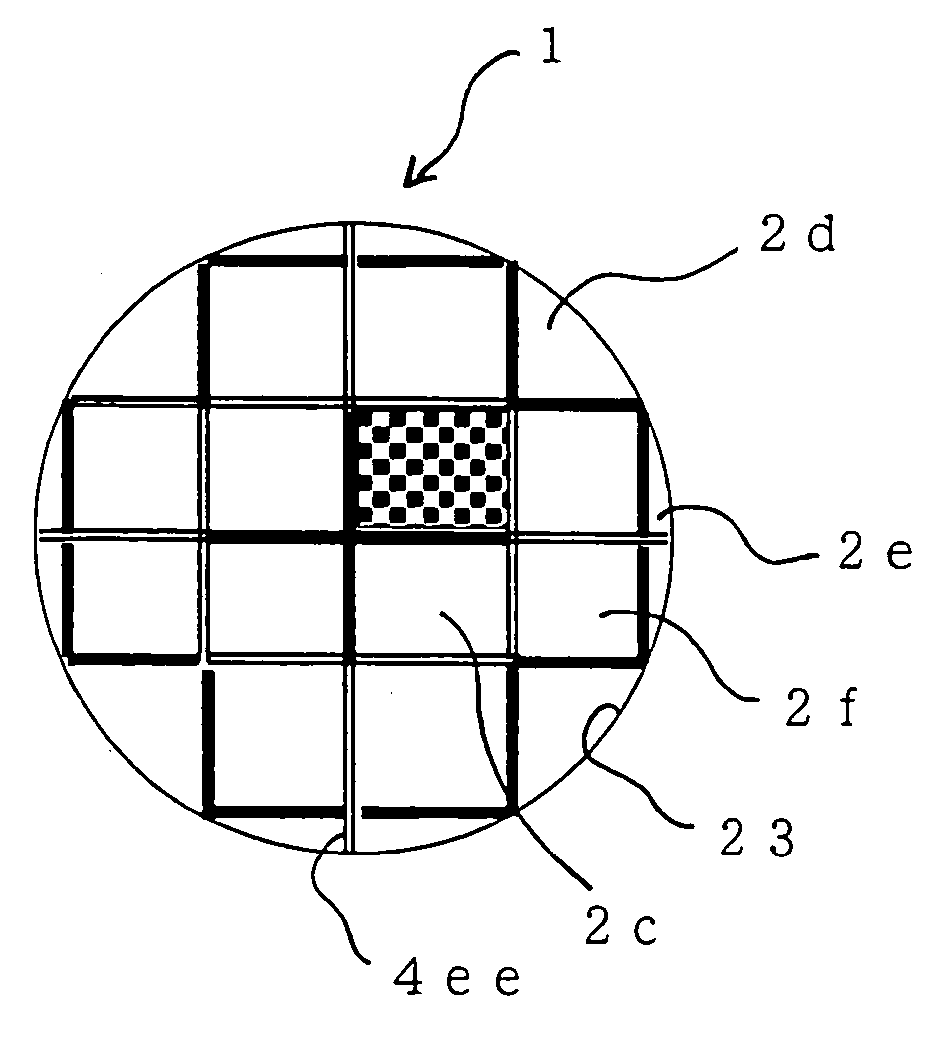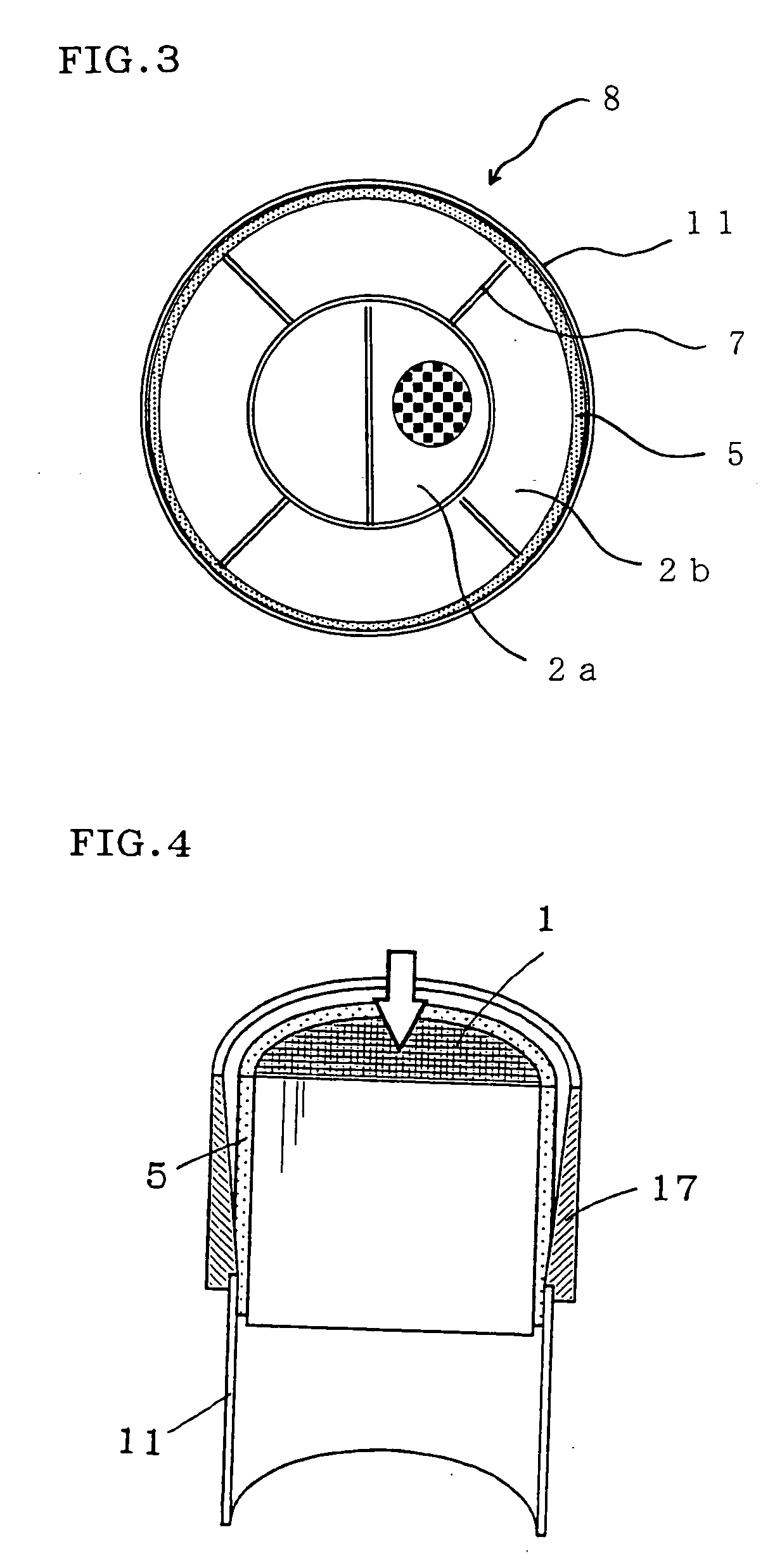Honeycomb structural body and assembly thereof
- Summary
- Abstract
- Description
- Claims
- Application Information
AI Technical Summary
Benefits of technology
Problems solved by technology
Method used
Image
Examples
example 2
[0046] The same operation as in Example 1 was conducted to obtain the honeycomb structural body 1 wherein each inner segment 2a had a wall thickness of 0.53 mm, a cell density of 16 cells / cm.sup.2 and a unit heat capacity of 0.67 J / cm.sup.3.multidot..degree. C.; each outer segment 2b had a wall thickness of 0.38 mm, a cell density of 31 cells / cm.sup.2 and a unit heat capacity of 0.68 J / cm.sup.3.multidot..degree. C.; the heat capacity ratio of inner and outer segments was about 1; and the wall thickness ratio was 0.72. Further, the ceramic fiber-made non-intumescent mat was wound around the outermost peripheral surface of the honeycomb structural body 1, then the resulting material was stuffed in a SUS 409-made metallic container 11 using a tapered jig, to compression-fix the segments to each other and compression-fix the honeycomb structural body to the metallic container, to obtain a honeycomb structural assembly 8.
example 3
[0047] The same operation as in Example 1 was conducted to obtain a honeycomb structural body 1 wherein each inner segment 2a had a wall thickness of 0.64 mm, a cell density of 16 cells / cm.sup.2 and a unit heat capacity of 0.78 J / cm.sup.3. .degree. C.; each outer segment 2b had a wall thickness of 0.31 mm, a cell density of 31 cells / cm.sup.2 and a unit heat capacity of 0.56 J / cm.sup.3.multidot..degree. C.; the heat capacity ratio of inner and outer segments was 0.72; and the wall thickness ratio was 0.48. Further, the ceramic fiber-made non-intumescent mat was wound around the outermost peripheral surface of the honeycomb structural body 1, then the resulting material was stuffed in a SUS 409-made metallic container 11 using a tapered jig, to compression-fix the segments to each other and compression-fix the honeycomb structural body to the metallic container, to obtain a honeycomb structural assembly 8.
PUM
| Property | Measurement | Unit |
|---|---|---|
| Fraction | aaaaa | aaaaa |
| Thickness | aaaaa | aaaaa |
| Area | aaaaa | aaaaa |
Abstract
Description
Claims
Application Information
 Login to View More
Login to View More - R&D
- Intellectual Property
- Life Sciences
- Materials
- Tech Scout
- Unparalleled Data Quality
- Higher Quality Content
- 60% Fewer Hallucinations
Browse by: Latest US Patents, China's latest patents, Technical Efficacy Thesaurus, Application Domain, Technology Topic, Popular Technical Reports.
© 2025 PatSnap. All rights reserved.Legal|Privacy policy|Modern Slavery Act Transparency Statement|Sitemap|About US| Contact US: help@patsnap.com



